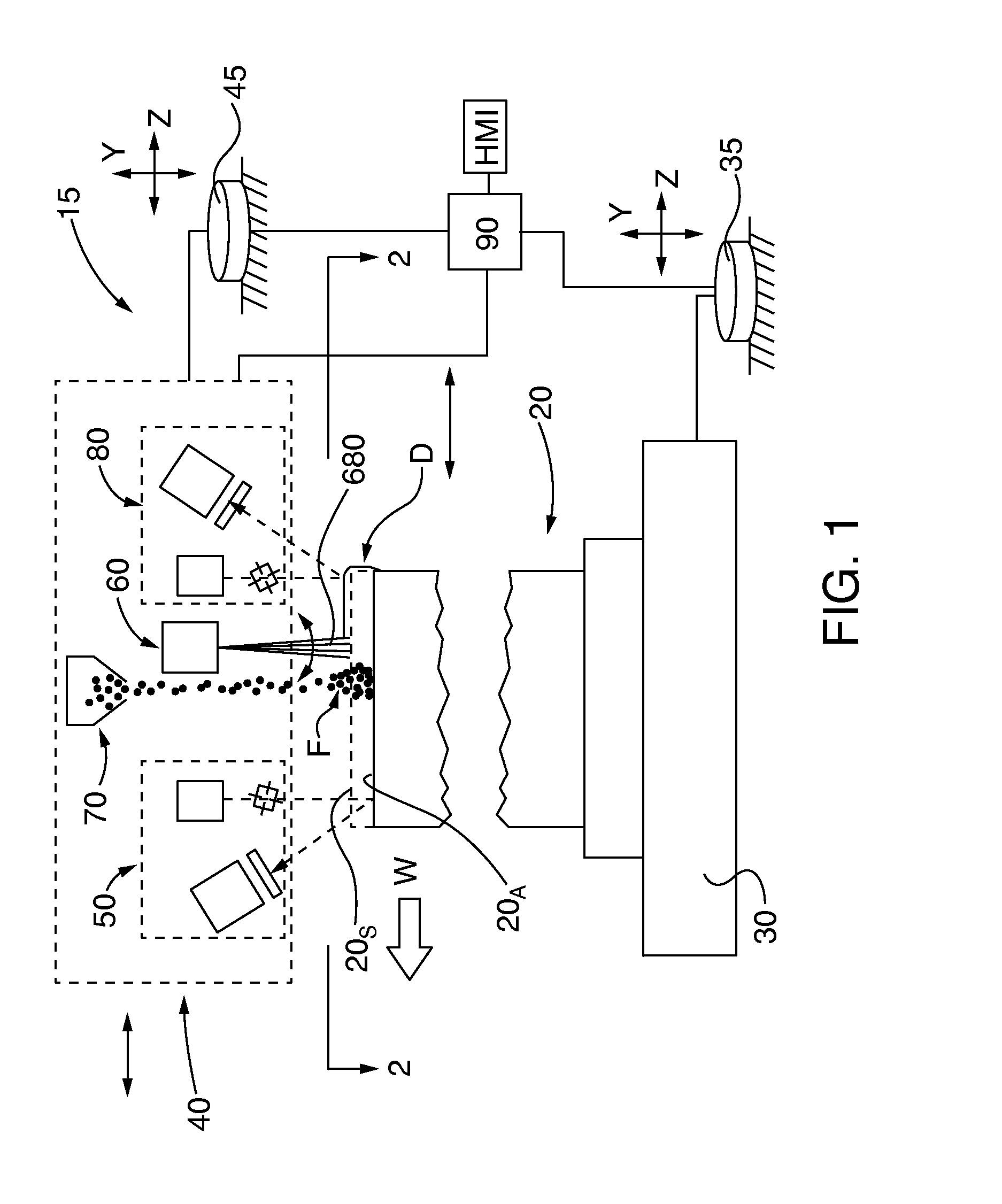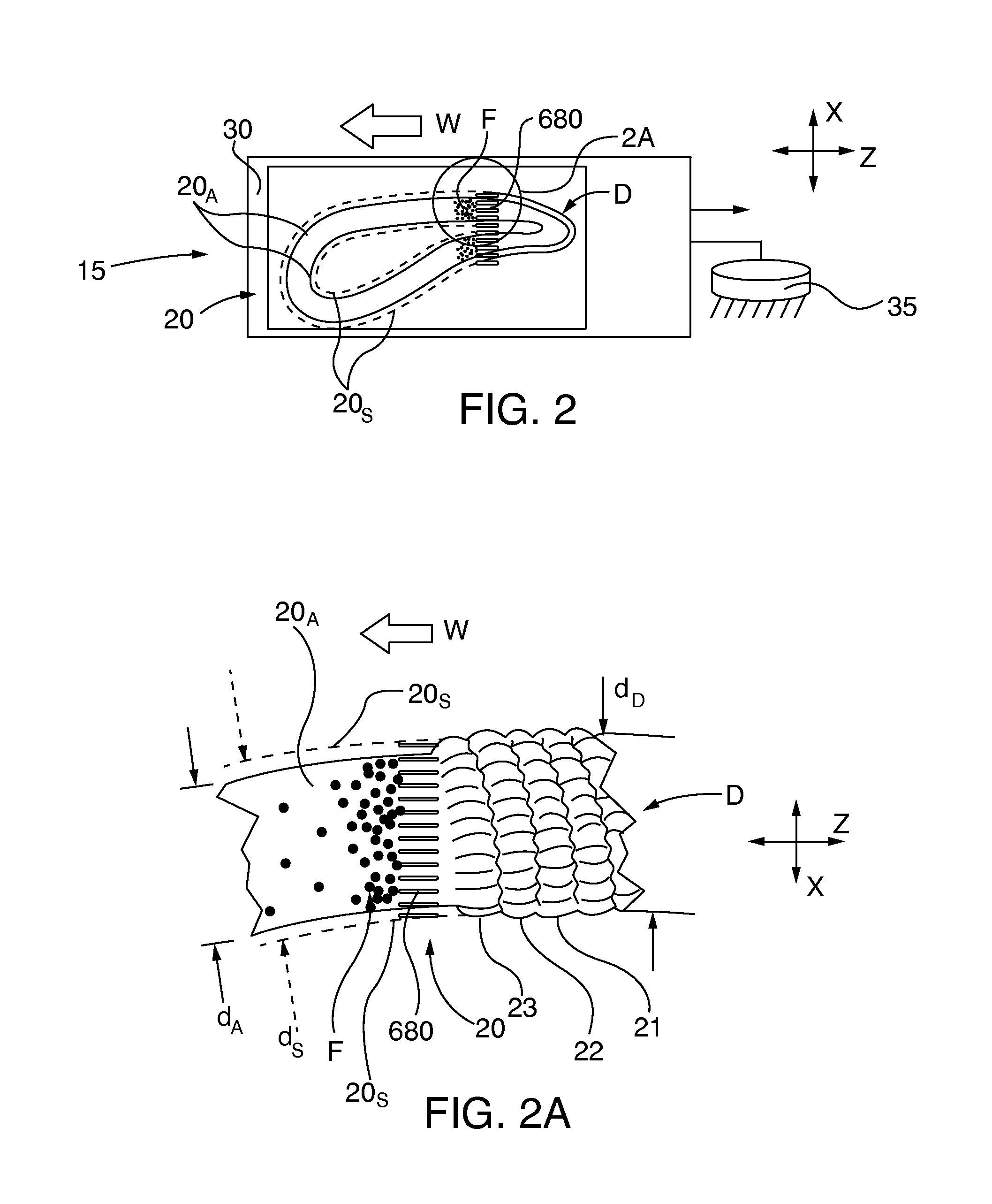Method for automated superalloy laser cladding with 3D imaging weld path control
a superalloy and laser cladding technology, applied in the direction of machine/engine, manufacturing tools, solventing apparatus, etc., can solve the problems of difficult subsequent structural welding, difficult to repair nickel and cobalt based superalloy materials used in turbine components such as turbine blades, and easy cracking of blades. , to achieve the effect of improving the quality of the cladding, and improving the cladding
- Summary
- Abstract
- Description
- Claims
- Application Information
AI Technical Summary
Benefits of technology
Problems solved by technology
Method used
Image
Examples
Embodiment Construction
[0042]After considering the following description, those skilled in the art will clearly realize that the teachings of the present invention can be readily utilized in laser cladding systems or methods, wherein turbine components, such as service-degraded superalloy turbine blades and vanes, are clad by laser beam welding. The welding / cladding path, including cladding application profile, is determined by prior, preferably dynamic real time, non-contact 3D dimensional scanning of the component and comparison of the acquired dimensional scan data with specification dimensional data for the component. A welding path for cladding the scanned component to conform its dimensions to the specification dimensional data is determined. The laser welding apparatus, preferably in cooperation with a cladding filler material distribution apparatus, executes the welding path to apply the desired cladding profile.
[0043]In some embodiments described herein a post-weld non-contact 3D dimensional scan...
PUM
| Property | Measurement | Unit |
|---|---|---|
| dimensional width dA | aaaaa | aaaaa |
| dimensions | aaaaa | aaaaa |
| optical energy | aaaaa | aaaaa |
Abstract
Description
Claims
Application Information
 Login to View More
Login to View More - R&D
- Intellectual Property
- Life Sciences
- Materials
- Tech Scout
- Unparalleled Data Quality
- Higher Quality Content
- 60% Fewer Hallucinations
Browse by: Latest US Patents, China's latest patents, Technical Efficacy Thesaurus, Application Domain, Technology Topic, Popular Technical Reports.
© 2025 PatSnap. All rights reserved.Legal|Privacy policy|Modern Slavery Act Transparency Statement|Sitemap|About US| Contact US: help@patsnap.com



